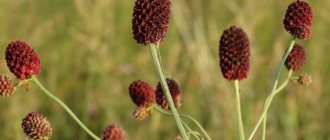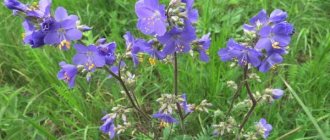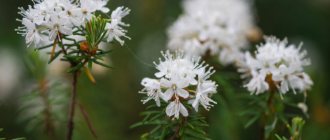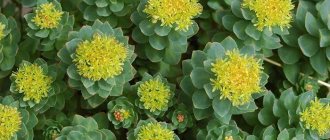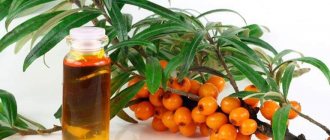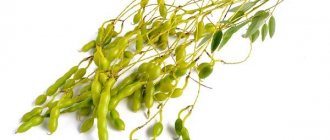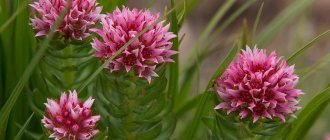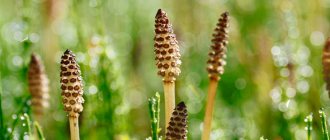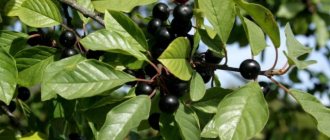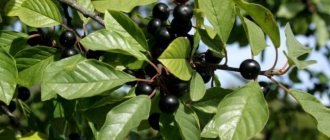The ornithógalum plant has recently become popular in folk medicine. The second name is medicinal Indian onion. Siberian healers noticed its amazing properties only at the end of the 20th century. But since then, the plant has become so widely used that it is on the verge of destruction - several types of Indian onions are now listed in the Red Book.
Why is it so valued? What are its amazing healing properties? Are there any contraindications for use? How do those who have already tried it respond to this natural medicine? We will answer these questions in detail. We will also introduce you to recipes for effective medicines based on medicinal Indian onions.
What is this?
Ornithogalum, Indian onion, ornithischium. This is a perennial plant from the asparagus family. South America is considered its homeland. It is known that ornithogalum was brought to the Soviet Union (Leningrad Botanical Institute) from Germany. Why then the medicinal Indian onion? The name was given due to the association of the taste of the hot milky juice of the plant with Indian hot spices. Geographical origin had nothing to do with it.
It is an ornamental plant with a stem that takes the shape of a bulb where it grows from the soil. Its leaves are long and flat, dark green in color with a yellow stripe down the center. As they grow, they change their location - they go down and curl at the tips. Medicinal Indian onion produces an arrow with white or cream-colored inflorescences.
This plant can be grown both in greenhouses and in residential premises, at home. The poultry plant is quite unpretentious - it feels great both on windows and in the back of the room. Watering is needed moderately - as the top layer of soil dries. In summer, it is better to take the plant out into the fresh air, into direct sunlight or plant it in open ground.
What does it look like
Indian onion, or bird's-eye, is a herbaceous perennial from 30 to 85 cm tall. It grows from an ovoid bulb covered with dense scales. White, cord-like roots extend from its lower part.
The photo of an Indian onion flower with numerous medicinal properties shows that the leaves of the plant are long and wide, slightly reminiscent of sedge plates. The buds are white, with green veins, collected in small apical racemes located on a long peduncle, and are interspersed with needle-like outgrowths. The fruits of Indian onions are represented by capsules with flat, round, black seeds.
Indian onion is often grown as a houseplant.
The perennial is native to South Africa, but is now ubiquitous in the tropical and temperate climates of Asia, Europe and America. Indian onions are grown outdoors and in greenhouses.
What is the composition of the plant?
In the article, we, among other things, present the medicinal properties and photos of Indian onions. It is the milky sap of this plant that has the greatest value for traditional medicine. But taking it internally is strictly prohibited - the substance is poisonous! Like all other parts of the poultry farm. Despite the name "Indian onion", this plant should not be ingested.
What are the medicinal properties of Indian onions? The use of this plant for therapeutic purposes has become popular due to the biologically active substances it contains:
- Essential oils.
- Acids of organic origin.
- Glycosides.
- Alkaloids - thiocolchicine, colchicoside, colchicine. It is the latter that is considered a natural poison. Why internal use of medicines based on Indian onions can cause severe intoxication of the body.
However, there is no ornithogalum in reference books on traditional medicine. The pharmaceutical industry is not interested in it, in particular, due to the low content of alkaloids in the raw materials of this plant.
Beneficial features
The medicinal properties and uses of Indian onions are primarily of interest to readers. We list the main ones:
- Natural antibiotic. This component, again, is contained in the milky sap of the plant. Therefore, it has an antiseptic and antibacterial effect.
- Pain reliever. Poultry juice has this effect. Its active substances are able to penetrate the epidermis and relieve pain and relieve inflammation.
- Anti-edematous effect. The alkaloids contained in Indian onions help get rid of swelling.
- Stimulating blood circulation. Plant elements have a beneficial effect on the condition of capillary walls and help improve blood flow. This property makes Indian onions even a prophylactic against the formation of malignant tumors.
Ointments, decoctions, and water- and alcohol-based tinctures are made from poultry grass. Moreover, in this case all parts of this plant have biological value. Therefore, its leaves are most often used to make home medicine. If you cut them moderately and carefully, the plant itself will not be harmed and will continue to grow.
Indications for use
The use of Indian onion helps with various diseases of the musculoskeletal system, including the following conditions:
- Radiculitis;
- Arthrosis;
- Rheumatism;
- Rheumatoid arthritis;
- Deposition of salts in joints;
- Osteochondrosis;
- Polyarthritis.
Medicines prepared with the help of the plant are used to treat infectious and mechanical skin lesions in the form of tumors, abscesses and bruises. They are also used to heal various wounds and cuts, herpes labialis, to relieve swelling from wasp and bee stings, to treat skin rashes on the face, to eliminate warts, and to relieve itching from mosquito bites. Medicines from plant juice also help in the treatment of fungal skin diseases.
Indian onion is used for severe headaches, migraines and acute respiratory infections.
Other indications for the use of a medicinal plant include the following conditions:
- Mastitis;
- Inflammation of the sciatic nerve;
- Bronchitis;
- Bone tuberculosis;
- Periodontal disease;
- Myositis.
Home Remedies Applications
The medicinal plant “Indian onion”, due to the mass of its beneficial properties, has a whole list of uses:
- Hematomas, fractures, muscle and ligament sprains. The plant affects peripheral vessels, improves metabolic processes in damaged tissues, and promotes blood flow to them. Indian onion can also relieve swelling and characteristic pigmentation of injuries.
- Joint pain of a rheumatic nature. In particular, arthritis and polyarthritis.
- Various tissue damage (plant elements help speed up their regeneration).
- Inflammatory processes in the body (Indian onions effectively relieve inflammation).
- Radiculitis, osteochondrosis, salt deposits. An auxiliary agent in complex therapy.
- Insect bites. Indian onion relieves swelling, itching, and inflammation in the affected area.
- Furunculosis, herpes. Here poultry is actively used in folk medicine because of its bactericidal properties. It helps stop the inflammatory process and stop the proliferation of bacteria.
- Phlebeurysm.
- Foot fungus.
- Papillomas, warts and other pathological skin formations.
- Diseases of a neurological nature.
Poultry compresses
They are used mainly for salt deposits and gouty pain.
I repeat once again - even for external use, which is considered quite safe, it is better to prepare a tincture - in a ratio of 1:20. The compress begins to be laid with the thinnest layer - a soft cotton cloth or gauze is soaked in infusion, then there is a plastic film (in size - larger than a piece of cloth, completely covering it) or special paper for compresses, a layer of cotton wool or woolen fabric (it should be twice as large thicker than a layer soaked in infusion), and the whole thing is bandaged to the sore joint. The compress is kept for several hours, usually overnight. Monastic collection for WEIGHT LOSS
Contraindications
Before we tell you how to use Indian onions for medicinal purposes, we will once again warn you that this folk remedy is toxic - it is not intended for internal consumption. For external use only.
In particular, its use is contraindicated in the following cases:
- Bleeding gums.
- Hemophilia.
- Pregnancy and lactation period.
- Individual intolerance to substances contained in the plant.
Methods of preparation and use
Traditional medicine offers several basic options for preparing Indian onions. At the same time, any poultry-based products are used only externally.
Decoction
An aqueous decoction of Indian onion is used in compresses. It is in demand for bruises and sprains; it can be used to wipe healing burns and wounds, and inflammation on the skin. The cooking recipe looks like this:
- two large spoons of fresh leaves of the plant are crushed to a paste;
- pour raw materials into a thermos;
- pour 1 liter of boiling water and leave under the lid for two hours.
The finished broth must be filtered through folded gauze. It is used warm or chilled.
Poultry decoction relieves swelling and pain when applied as a compress for osteochondrosis
Tincture
Alcohol tincture of Indian onion is widely used in home health recipes. The medicine is made as follows:
- several leaves of the plant are washed with cool water and finely chopped with a knife;
- the raw materials are placed in a glass jar and filled with water in a ratio of 1:10;
- Place it in a dark, cool place to infuse for two weeks, removing and shaking the container from time to time.
After the expiration date, the drug is filtered through gauze to remove sediment. The product is used externally for radiculitis, varicose veins and nail fungus. You can use the tincture three times a day.
Poultry tincture helps with any muscle pain
Juice
Fresh poultry juice has strong medicinal properties. It is obtained from the leaves of the plant, and Indian onion can be used for medicinal purposes to treat inflammation, ulcers, bruises, and joint pain. The plate needs to be cut in half, and then simply squeeze out the liquid, just like from aloe or Kalanchoe. Another method suggests grinding several leaves at once to a pulp and squeezing them through cheesecloth to separate the juice.
In both cases, you need to work with the plates very carefully, not only with protective gloves, but also with glasses. The sap of the plant is caustic and can cause a burning sensation on the skin and mucous membranes.
To obtain juice, it is better to take the leaf plates of the poultry plant located at the bottom
Important! For medicinal purposes, it is recommended to use the freshest possible liquid from poultry leaves. It is worth extracting the juice immediately before preparing the lotion or compress.
Ointment
Based on fresh poultry leaves, you can prepare an ointment for rubbing muscles and joints for neuralgia, osteochondrosis and radiculitis. The recipe looks like this:
- a long leaf of Indian onion is chopped with a sharp knife, and then ground with a masher to a paste;
- a homogeneous substance is mixed with 50 g of petroleum jelly or lanolin;
- add two large spoons of natural honey;
- mix until the components are completely homogeneous.
Homemade ointment is applied in small quantities to sore spots and rubbed in thoroughly or covered with a compress. You can use the product up to three times a day.
Ointment with the addition of Vaseline and honey has a good healing effect and does not harm the skin
Features of use
Before using Indian onions, be sure to test for an allergic reaction. To do this, a small amount of plant juice is applied to the inner surface of the elbow. After two hours, the body’s reaction is checked.
If nothing has changed, then the product can be used for treatment and prevention. But you should completely abandon the use of Indian onions in the following cases:
- Spread of redness in skin areas.
- The appearance of swelling and itching.
- The occurrence of blisters.
You know about the use and medicinal properties of Indian onion (photos of the plant are presented throughout the article). We would like to warn you that the therapeutic course using drugs based on it should not exceed 30 days. The active substance of Indian onion, colchicine, penetrates the skin and, when taken for a long time, can cause leukopenia (a decrease in the number of leukocytes in the blood).
After using this product in the form of an ointment or tincture, be sure to wash your hands thoroughly with soap. Make sure that this medicine does not come into contact with mucous membranes. In particular, on the eyes. In case of contact, rinse the damaged area thoroughly with water.
Necessary Precautions
It is important not to forget the fact that poultry plant (Indian onion) is an extremely poisonous plant. Contact of juice with mucous membranes should be avoided, and even more so, ingestion should be allowed.
The place where the plant is grown must be kept away from children and pets. Preparations based on poultry juice are contraindicated for all people with hemophilia.
If poisonous juice gets into your eyes or mouth, rinse them thoroughly under running water. It is recommended to use the products only on those areas of the skin that have no mechanical damage.
Before taking decoctions from the plant, you need to make sure in advance that there is no damage to the oral cavity and no bleeding gums. In the process of preparing preparations from Indian onions, it is necessary to protect the skin of your hands by wearing medical gloves.
Indian onion, namely its juice, very often causes an allergic reaction. Before taking any product that contains this plant, you should consult your doctor. Despite the dangers that poultry juice has, it has great benefits, and growing such an amazing plant at home can be a very useful undertaking.
Traditional recipes:
A healing tincture is prepared from Indian onions
It can be used both externally and internally (but very carefully, and after mandatory consultation with a doctor). The tincture has properties that have a positive effect on the functioning of the cardiovascular system and fills a person with strength.
It is used very simply: half an hour before meals, you need to dilute 1 teaspoon of tincture in 3 glasses of water, take 2-3 times a day; Poultry leaf can help those with sciatica. To alleviate the condition, just rub your lower back with a leaf of Indian onion and wrap the area with a warm scarf. At first you will be bothered by a strong burning sensation, which will pass over time and become easier; The antifungal effect of poultry juice has long been noted; To relieve symptoms of rheumatism, it is recommended to take baths with the addition of a small amount of pine extract and Indian onion juice. The preparation takes a very long time: pine cones and branches are boiled for about 12 hours, after which an alcohol tincture of poultry juice is added to the broth. For one bath, you need to pour in about 1 liter of this extract.
How to prepare folk remedies correctly?
You know about the medicinal properties of Indian onions and contraindications to its use. Now let's move on to making homemade medicines based on this plant. It is important to remember the following:
- For the preparation of medicines, it is best to use an adult plant. By the age of 2, the maximum amount of biologically active components accumulates in it.
- Use the leaves to make medicine - after this, the poultry plant will continue to grow. And if you take the bulb, the plant, of course, will die.
- When preparing tinctures, keep in mind that colchicine does not dissolve well in an alcohol base. Therefore, water tinctures here will be many times more effective (and more toxic, respectively).
- When preparing medicine, do not use metal objects.
- Be sure to wear rubber gloves.
- If you have used a blender, meat grinder, mixer, household appliances must be treated with a disinfectant and rinsed under running hot water.
Reviews about the medicinal properties of Indian onions list many useful recipes for products based on it. Let's list the most effective of them.
Care
The plant is unpretentious, and caring for it will not cause serious problems. If you follow simple rules for caring for Indian onions, this amazing indoor pet will delight you with its presence for a long time.
Conditions of care:
- Poultry plant grows well both with sufficient lighting and with its lack.
It doesn’t matter which window sill the flower pot will be placed on. If the plant is located on the south side of the room, it should be protected from direct sunlight; - air humidity is of great importance for Indian onions
, especially in the hot summer. This problem is easily solved by periodically spraying the plant with warm, settled water. Also, do not forget to wipe its leaves from dust with a damp cloth; - this is a heat-loving plant
, therefore, its temperature in summer should not be lower than +20 degrees. To prevent the poultry plant from growing too quickly, in winter you can give it a state of rest by lowering the air temperature to +8... +10 degrees; - It is not recommended to water the flower too often
, as the plant is afraid of waterlogging. Moisture is added only when the upper part of the soil is completely dry; - feed the indoor pet during the period of flowering and foliage growth (March - August).
The recommended frequency of feeding is once every two weeks. An aqueous solution of wood ash can be used as a fertilizer (1 tablespoon of fertilizer is infused in 1 liter of water for a week). This feeding should be alternated with a light pink solution of potassium permanganate (potassium permanganate); - An important aspect of care is replanting the plant.
To ensure that the flower is always in excellent shape, it is recommended to replant it once every two years in more fertile soil.
For insect bites
The medicinal properties of Indian onion and reviews of its use are given in the article. In the reviews of those who have tried this remedy, one can read more than once about its effectiveness in treating abscesses, swelling, tumors, and itching that are caused by insect bites.
Much has been said about the medicinal properties and use of Indian onion tincture. To prepare it, you need to take a poultry bulb, rinse it thoroughly and place it in a glass container. Pour it with one glass of vodka. Then seal it and place it in a dark place. There the product should be infused for about a month.
Then the liquid is filtered and poured into a bottle with a tightly sealed lid. The drug is used to treat insect bites by applying it to a cotton or gauze swab. This setting is only suitable for outdoor use, but not for indoor use!
Reproduction methods
The poultry plant is propagated in two ways:
- through seeds;
- through bulbs.
In the first case, you will have to resort to artificial pollination, but the second method will not pose such a hassle. The development of sprouts occurs independently under the scales of the bulb - the mother. At first they are not noticeable, but later bulges form on the scales. Their number ranges from two to twenty.
When the bulbs increase in size, they tear the scales and separate from it. They begin to develop independent roots. There is no need to rush to transplant them; this can be done when they have formed strong roots.
When using propagation through seeds, a larger number of children are obtained.
But in order to produce full-fledged seeds, the grown flower must be pollinated. This is done during the flowering period (not earlier than after a year of flower development).
For pollination, you can use a brush. Once the seed box is dry, the seeds can be collected and sown. When four petals appear on the seedlings, they are allowed to be planted separately.
In addition to the methods described, there is one more. This is the division of the onion. For this, an onion with a volume of five or more centimeters is suitable. It is cut into two parts and the roots are trimmed. In this form, it should lie for several days, then it is planted in the ground and young shoots are expected.
For skin rashes
We have already looked at the photo of Indian onion and the medicinal properties of the plant. I would also like to talk about its benefits in the fight against various skin rashes - acne, boils, pimples.
Here the leaves of the plant are finely ground to a paste. Then apply the composition to the affected area of the skin and cover it with a napkin. The procedure lasts no more than 5 minutes. As soon as an intense burning sensation appears, it must be stopped.
For sore throat
The medicine is prepared in the following way: for one medium leaf of poultry plant - 10 parts of vodka. The greens of the plant are thoroughly chopped. Then the mass is placed in a glass container and compacted. It is filled with vodka on top.
The composition is infused for 2 weeks in a dark place. When ready, strain it. Compresses are made with the tincture and applied to the throat. The maximum treatment time here is 10 minutes. It is strictly prohibited to carry out more than two procedures in a row!
Growing at home
The homeland of Indian onions is South Africa, so the plant does not have high requirements for growing conditions. Easily tolerates complete drying of the soil for 2-3 months.
The plant is grown at home on a windowsill. There are no additional conditions for a decorative flower.
Caring for the tailed poultryweed:
- plant the bulb in a regular plastic or clay pot. The bulb is immersed more than half in the ground, then watered a little with water.
- In the warm season, the flower should be placed in well-lit areas. Watering is carried out only when the soil dries out.
- During the period of active growth, each leaf should be wiped from dust with a dry cloth.
- During the cold season, the flowerpot should be moved to the back of the room. Watering is carried out once a month.
- from dried flowers for treatment after the arrow is completely dry. Reproduction is carried out using bulbs, which grow very quickly.
Useful video
Share this post
- Related Posts
- What to do when you're bored: ideas for activities, interesting sites and ways to spend time usefully
- How to make your own family coat of arms for kindergarten and school, the meaning of the symbols
- How to descale a kettle with vinegar, citric acid and Coca-Cola, and why does it form?
- What Indian, Russian or teen movie should I watch when I want to cry?
- How to quickly remove brilliant green from skin
- How to play Russian lotto correctly: rules of the game at home
For fungal diseases
To prepare the medicine you will need juice from Indian onion leaves. It is thoroughly mixed with Vaseline in a ratio of 1:3. For better mixing, you can preheat the Vaseline in a water bath.
The shelf life of the resulting ointment is no more than one week. The product is used to treat nails and skin affected by fungus. A bandage is left on top.
Indian onion in cosmetology
The beneficial properties of Indian onions are used in home cosmetology. Decoctions of the plant and fresh juice from the leaves improve the condition of the skin and accelerate blood flow, help cleanse pores and eliminate inflammatory processes.
Indian onion for body care
The following product has a good effect on the skin and tissues:
- melt a bar of baby soap in a water bath and pour it into a small plastic mold;
- add 50 ml of coffee grounds and 100 ml of milk;
- add 20 ml of Indian onion juice;
- Gently mix the ingredients and put them in the refrigerator for two hours;
- Keep for another two days in a dry place at room temperature.
Ready-made homemade soap is used for hygiene procedures for body care. The product removes dead skin particles well, tones the epidermis and accelerates blood flow. Thanks to this, you can achieve a reduction in the “orange peel” and your body contours will quickly become more toned.
Indian hair bow
To care for weak and brittle hair, you can use poultry infusion. To prepare it you need:
- pour 1 liter of boiling water over 100 g of fresh plant leaves;
- keep the product covered for half an hour;
- strain the cooled infusion through cheesecloth.
Rinse hair with the product after washing. It is recommended to carry out the procedure daily for three days, and then take a break for two weeks and repeat the course.
Indian onion decoction helps get rid of dandruff and strengthens hair follicles
Indian onion for face
Indian onion juice and decoctions are rarely used for facial skin care. The products may get on the mucous membranes of the mouth, nose and eyes and cause severe burning.
But fresh liquid from poultry leaves can be used for targeted cauterization of ulcers and pimples. Apply the product directly to problem areas using a cotton swab and leave until dry. With daily use of Indian onion juice, skin blemishes can be dealt with in a few days.
To stimulate hair growth
In this case, the juice of Indian onion leaves is mixed with water in a ratio of 1:3. Rinse your hair with the resulting solution and then wrap it with a protective film. Wrap it on top with a towel, warm scarf or shawl to create a “greenhouse effect.” It enhances the effect of the active components of the plant. After 40 minutes, the composition is thoroughly washed off the scalp and hair.
Reviews
We have presented the medicinal properties and uses of Indian onions. Reviews about the use of this natural medicine are numerous. Their authors warn us that we need to strictly follow the dosage of the product and not allow it to come into contact with the mucous membranes - they may be severely irritated. If you feel a burning sensation on the skin, the product should be washed off quickly.
Most of the reviews are positive about the use of poultry-based products against radiculitis, arthritis and osteochondrosis. It fights pain very well. For fungal diseases, this home remedy is not used independently; it is used as a supplement to the main treatment, so it is difficult to judge the effect of Indian onions specifically.
There are no clear opinions on the use of the drug for skin diseases or insect bites - some of the authors of the responses note a positive effect. Some people complain about severe side effects from use (skin lesions, severe burning).
Indian onion is a plant rich in a whole range of biologically active components. But at the same time it is toxic. It is permissible to use this remedy only with the permission of the treating doctor.
The use of Indian onions in folk medicine
Traditional medicine offers several basic options for using poultry. Even when using the healing properties of Indian onion externally, proven algorithms and dosages must be carefully followed.
Treatment of nail fungus with Indian onion
To eliminate the fungus, use a simple ointment based on Indian onion leaves. A fresh plate about 20 cm long must be crushed into pulp and mixed with 50 g of melted interior fat or Vaseline.
The product is applied to the affected nail plates for 30 minutes daily, after which it is washed off with water. Therapy should be continued until the condition improves.
Indian onion for gout
A homemade balm from the plant relieves joint pain due to gout, eliminates inflammation and helps restore healthy mobility. The recipe for using Indian onions in folk medicine looks like this:
- four large spoons of sea buckthorn oil are heated and 5 g of beeswax are diluted in it;
- add a large spoonful of kerosene to the mass that has cooled to a warm state;
- add two large spoons of fresh Indian milkweed juice;
- add two beaten egg yolks;
- Stir the mixture properly.
You can apply this composition to sore spots up to four times a day. The balm is lightly rubbed into the skin and the joint is covered with a warm cloth for 40 minutes.
Indian bow vs heel spur
A heel spur is a very painful condition that interferes with free movement. To relieve discomfort, prepare the following medicine from Indian onions:
- a medium-sized poultry leaf is crushed;
- the gruel is mixed with small potatoes, grated with the peel;
- the mixture is applied to clean gauze and applied to the sore spot;
- The compress is fixed on top with plastic wrap.
It is necessary to keep the product on the leg throughout the day, so the bandage should be tight, but thin enough. After the expiration of the period, the remnants of the medicinal mixture are washed off, but a new compress is immediately made. Therapy is continued for a week until a noticeable result is obtained.
The use of Indian onions for papillomas
A caustic tincture of medicinal Indian onion helps get rid of papillomas and warts. Traditional medicine offers the following recipe:
- juice is squeezed out of fresh poultry leaves in the amount of six large spoons;
- mixed with the same amount of alcohol.
The product is applied pointwise to papillomas twice a day. Treatment is continued for a week.
Indian onion dries out formations on the skin and helps eliminate them
Indian onion for fibroids
Poultry plant has antitumor properties and can help with benign tumors of the uterus. For fibroids, traditional medicine suggests the following remedy:
We recommend reading: Rosehip infusion: benefits and harms, how to prepare
- mix a large spoonful of valerian roots with a similar amount of nettle leaves and rose hips;
- add 30 g of dry motherwort, celandine, peppermint and hawthorn berries;
- measure out three large spoons of the mixture and brew in 500 ml of boiling water for two hours;
- add 30 ml of alcohol tincture of Indian onion to the cooled product.
We recommend reading: White lily: photo and description, use in folk medicine
The medicine is filtered through folded gauze, and then poured into a filled bath and taken for 25 minutes. The procedure must be repeated every evening for two weeks.
Indian onion for osteochondrosis
In a video about the medicinal properties of Indian onions, their benefits for osteochondrosis are noted.
The plant relieves inflammation and swelling well. It is used in a very simple way:
- a small leaf is thoroughly crushed;
- With hands wearing protective gloves, apply the paste to the affected areas;
- wrap the top with polyethylene and a woolen scarf.
You need to keep the compress for about 40 minutes. At the beginning of the procedure, a strong burning sensation occurs, but after ten minutes it should go away.
Indian onion for headaches
The beneficial properties of Indian onions are in demand for migraines. Traditional medicine recommends squeezing a few leaves of the poultry plant, and then using gentle movements to rub the juice of the plant into the area of the temples, neck and collar. Self-massage is carried out for 2-3 minutes - the product is quickly absorbed into the skin. If the headache was caused by a muscle spasm in the neck, the discomfort will disappear almost immediately.
Indian onion for colds
The caustic juice of poultry has strong warming and antibacterial properties. The remedy is beneficial at the first symptoms of a runny nose; you need to squeeze a little liquid from the leaves and rub the bridge of the nose and wings of the nose three times a day.
Important! When treating with Indian onions, you need to be careful not to allow the juice to get on the mucous membranes, as this will lead to a severe burning sensation.
Indian onion for colds
For acute respiratory viral infections, bronchitis and influenza, rubbing with the following preparation is beneficial:
- Indian milkweed leaves are ground into a fine paste;
- in the volume of a large spoon, mix with 30 g of comfrey roots;
- pour 50 ml of medical alcohol;
- For three days, put the product in a dark and cool place.
The finished preparation is filtered, and then rubbed on the chest and upper back in the projection of the lungs. You can repeat the procedure every six hours.
Rubbing with poultry tincture for colds has a warming effect
Indian onion for wounds and cuts
You can use products based on Indian onions for fresh cuts, wounds and abrasions. The easiest way is to mash a leaf of the plant and apply it to the affected area - the juice will not only prevent infection, but also quickly eliminate the pain.
Skin lesions can also be washed with poultry decoction. In both cases, Indian onion will speed up the restoration of the epidermis.
Advice! Juice and decoction can be used in the treatment of healing burns to avoid the appearance of scars.
